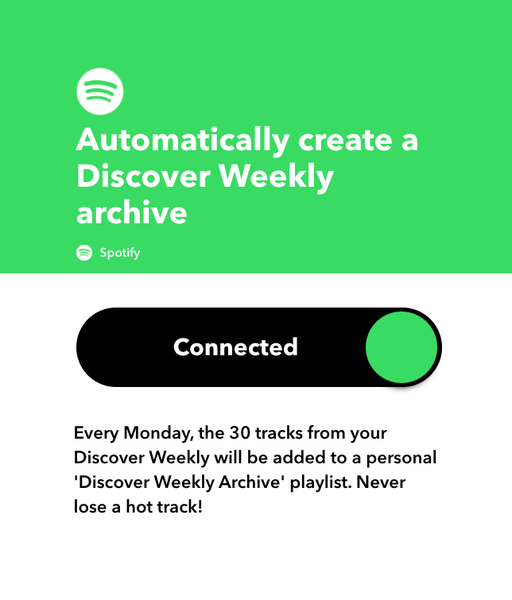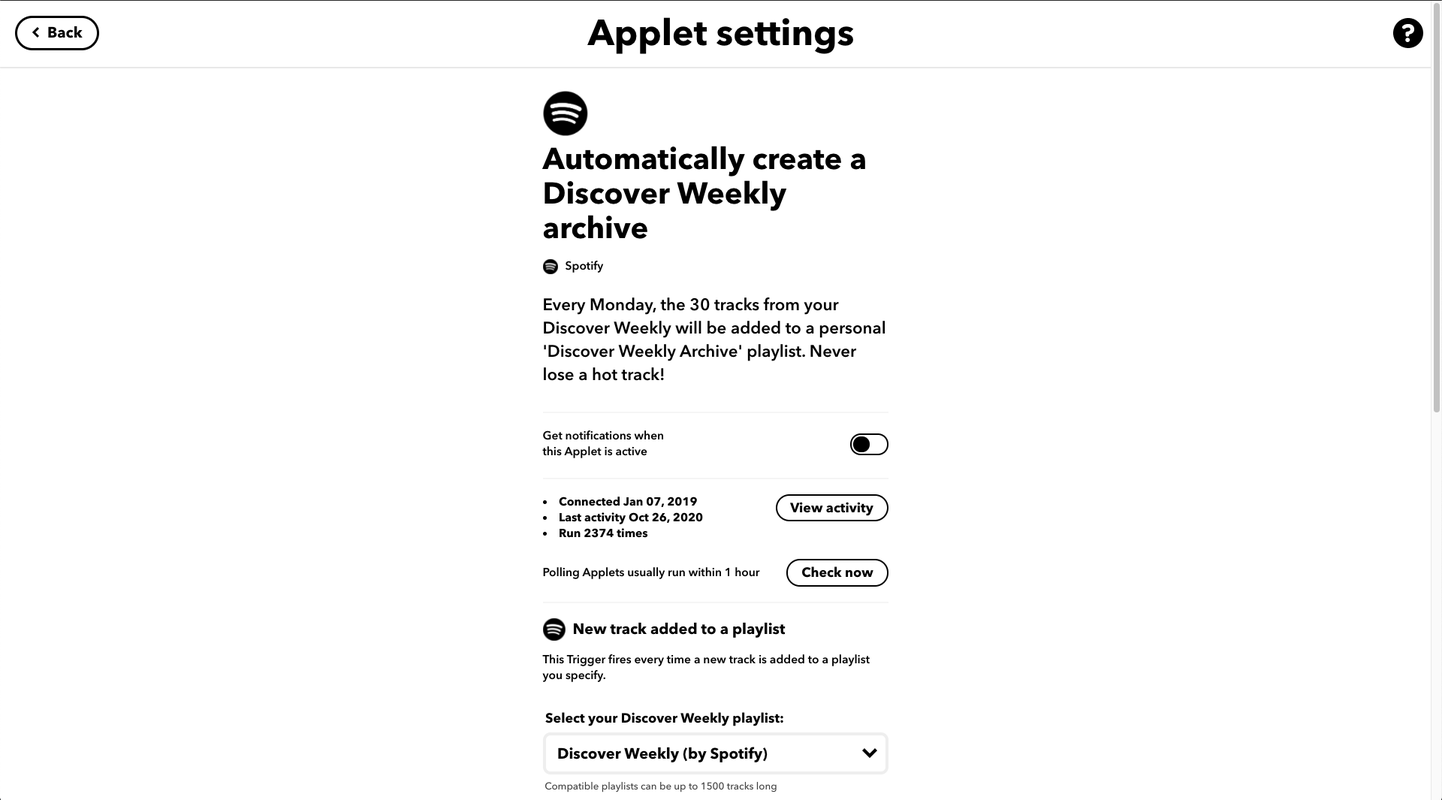I was a power user of IFTTT for many years, so I had mixed feelings recently about their decision to change their pricing model. Under IFTTT’s new pricing, you can only have 3 “custom” actions created/enabled at any time – which is quite a downgrade from the current unlimited free plan. On the one hand, I’m glad to see IFTTT take necessary steps to ensure it has long-term financial stability, but on the other hand, I don’t personally get enough value from their service anymore to justify a recurring cost. (The plan will likely be $4/month1, but if you sign up before a deadline, you can lock in a price as low as $2/month)
IFTTT was an awesome and uniquely easy-to-use service when it first came out, but now there are better options for personal automation for people like me, who like to tinker with this sort of thing. Systems like node-red and iOS shortcuts can be self hosted or run on device, and they provide more sophisticated logic for workflows than IFTTT.
I stayed on IFTTT this long mostly due to inertia, and it’s fantastically long list of supported services. If I needed to throw together a quick spreadsheet-recording automation, or cron-like trigger, IFTTT was a great starting place. However, it does have limitations. Until now (though it seems like this might change with their premium offering), IFTTT basically only did what its name implied: “if this, then that”. No “if X then Y else Z”, no “if X and Z then Y”, etc. Often times, you don’t need any complicated logic or filtering, but it was frustrating that there wasn’t the option for more advanced automation. Ultimately, IFTTT had a great “on-ramp”, but once you were on board with their system, you realize how shallow it is. Excellent breadth, mediocre depth.
Similarly, in the past couple years IFTTT’s UI has leaned heavily into the “applet” metaphor, with these big goofy toggle switches to enable/disable automations. The site also transitioned towards a focus on community- (or, more often corporate-) created automations, at the expense of the experience for creating your own applets. Like seriously, why is 30% of the UI for an applet details page (!) taken up by the connection status toggle?

The settings page, too, is woefully information sparse. As a user, this makes me feel that desktop-usability was not high on IFTTT’s design priorities. You have to scroll the page to begin to start to see what the automation is doing:

Eventually, the UI got to the point where it felt like using Duplos or something. It didn’t have to be this way! There are great low-to-no-code tools that have much more usable interfaces, like Scratch.

So, I decided to migrate away, since the move to premium was already going to substantially limit what I could do with IFTTT. In going through my catalog of IFTTT “applets”, I identified 3 main patterns of automations that I used IFTTT for: (1) triggering an action to happen at a specific time, (2) triggering an action to happen in response to a location change (i.e. geofencing), or (3) triggering an action to happen in response to an event in a web service.
Of these 3 buckets, iOS shortcuts readily handles the first 2: as of iOS 14, Shortcuts can be triggered in the background at a specific time of day, or in response to entering/leaving a geofence. Shortcuts also has a much more sophisticated integration with iOS than any of IFTTT’s apps, so more exciting mobile automation becomes possible – for example, setting my phone to Low Power Mode once the battery drops below a certain threshold. Of course, you are restricted to apps/services that support Shortcuts, and the number of supported services is considerably smaller than IFTTT.
Node-red handles buckets 1 and 3: it has good support for time-based actions, and can receive webhooks to respond to events from external services. It also has a great plugin ecosystem, so it’s support begins to rival IFTTT’s impressive selection of supported services. Additionally, node-red has many “escape hatches” that IFTTT does not: you can use it to make raw HTTP requests and write your own plugins/logic in Javascript, allowing for much more complex automation.
Neither node-red nor iOS shortcuts are as easy to use as IFTTT for putting together a simple automation, which is a shame. However, between them (and other alternative automation frameworks that I’ve trialed, like n8n and huginn), I’ve more than covered my personal automation needs.
And so, goodbye IFTTT! 👋 I’m not put off by them charging for their service; I think charging for software is a good thing! It’s just that this was the nudge I needed to move my automations to infrastructure that I have more control over, which has other benefits outside the scope of this article. I’m thankful that a service like IFTTT continues to exist; I still think it’s a fantastic tool to “on-ramp” less technical folks into automation and no-code tools.
Cover art: The Village Of Murnau (1908)
-
A previous version of this article stated that the price for IFTTT Pro was $10/month. While the original press release, as covered here indicated a $10/month price, and the current suggested price for IFTTT Pro on their signup form is $10/month, it seems like going forward the Pro price will be $4/month. I apologize for the inaccuracy. ↩︎
